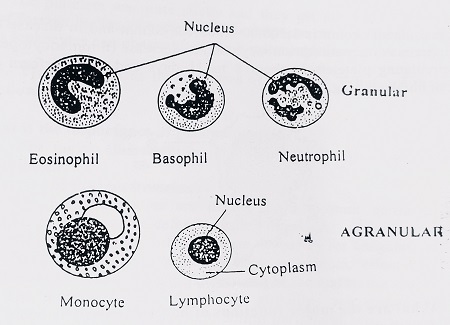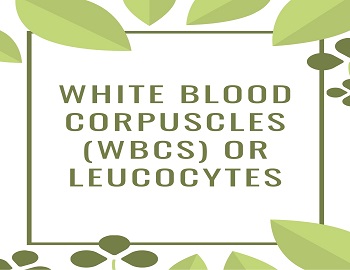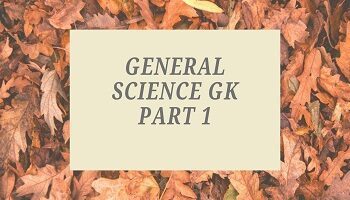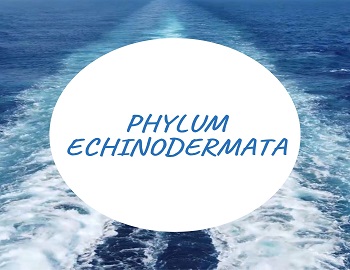Table of Contents
White Blood Corpuscles:
Leucocytes are colourless, nucleated, often amoeboid cells found in blood (and lymph) which are devoid of haemoglobin and are capable of coming out of blood capillaries through the process of diapedesis. They are rounded irregular cells capable of amoeboid movement. They are bigger in size and less in number than the Red Blood Corpuscles (RBCs). Their size varies from 12 to 20 μm and their average total number from 6000 to 8000 per cubic mm of blood. However, their count may increase (leukaemia) or decrease (leukopenia) depending upon the abnormalities. White Blood Corpuscles have a comparatively shorter life span of 3-4 days and then the worn out are damaged in the blood, liver and lymph nodes. The White Blood Corpuscles take part in phagocytosis to engulf the foreign particles. Depending on the presence or absence of granules, WBCs are divided into two types, granulocytes and agranulocytes.
Granulocytes or Granular Leucocytes:
They are characterized by the presence of granules in the cytoplasm and a polymorphic nucleus. They are of three types depending upon the stainability with Leishman’s Stain.
Neutrophils:
Neutrophils are quite large with a multilobed (2-7 lobed) nucleus. They have fine granules which are weakly stained with neutral dye (both acidic and basic). Their absolute number is about 3000-6000 per cubic mm and their life span is 10-12 hours. They are the most abundant cells (60-65%) of the total White Blood Corpuscles. Neutrophils play an important role in engulfing the foreign particles (germs) and thus, are phagocytic in their function. Besides phagocytosis, neutrophils may also discharge granules to the outside through exocytosis to damage foreign particles, cells and unwanted structures. This also causes tissue damage and inflammation. Example- rheumatoid arthritis.
Eosinophils:
Eosinophils are large and the nucleus is commonly bilobed. The granules of cytoplasm are coarse and stain with acidic dye-eosin. They are, therefore, also called acidophils. The granules contain several lysosomal enzymes. A number of eosinophils rise rapidly in worm infestation and certain allergic disorders. The phenomenon is called eosinophilia. Eosinophils are involved in the inactivation (and phagocytosis) of antigen-antibody complexes and inflammatory substances like histamine and leukotrienes. Acidophils also attach themselves to worm larvae and kill them. Their number varies from 150-400 per cubic mm of blood. Their life span is about 14 hours and constitutes 1-4% of the total WBCs.
Basophils:
Basophils are large with a bilobed nucleus and constitute 0.5-1% of the WBCs count. The cytoplasm contains granules of various sizes and takes deep stain with basic dye-methylene blue. Basophils secrete substances such as heparin, serotonin and histamines. They are also involved in inflammatory reactions. Basophils are similar to mast cells. Likewise their secretion functions as an anticoagulant in intact blood vessels. They bring about an inflammatory response to injury. Their absolute number varies from 0-100 per cubic mm and their life span is 8-12 hours.
Agranulocytes or Agranular Leucocytes:
Agranulocytes are characterized by the absence of granules in the cytoplasm and are differentiated in the lymph glands and spleen. They are of two types.
Monocytes:
These are the largest sized leucocytes and maybe upto 20 μm. These form about 5.3 % of all the leucocytes. The nucleus is oval, kidney or horse-shoe shaped and is usually eccentric. These are usually formed in the lymph nodes and the spleen from the precursor cells called monoblasts. These are highly motile and phagocytic in action and engulf the bacteria so these form the second line of defence. These also differentiate into macrophages or scavenger cells which remove the damaged and dead cells to clean the body.
Lymphocytes:
Lymphocytes have a single large nucleus with pale blue cytoplasm. They constitute about 30% of the total leucocytes count. These are formed in the thymus and lymphoid tissue like lymph nodes, spleen, tonsils etc. from the precursor cells called lymphoblasts. Lymphocytes are of two major types- B-lymphocytes and T-lymphocytes form which manufacture serum globulin and they play a key role in the immune response of the body.










Comments (No)